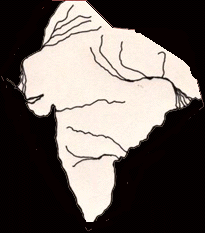| Art History 207~~Fall 1998 |
| Study Questions |
| Week 6 |
| The development of the North Indian temple |
|
1. Explain the meaning of 'bhakti'. How is it reflected in the sculpture and architecture of mature Hindu temples? 2. Temples are organized both horizontally and vertically. In terms of kinds of activity, what is the progression of spaces from east to west? What is the progression of meaning from the base of the temple to the top of its tower? In thinking this out, keep in mind one or two good, mature examples of temples. 3. On a typical North Indian temple, such as the Parasrameshvar or Surya Deul, what are the typical means of ornamenting the temple wall? what are the typical motifs? 4. Explain the symbolism of the following parts of or elements
on a temple:
5. What is the distinctive profile of a Khajuraho temple? How does it differ from a mature Orissan temple such as Lingaraja? 6. What remains of the complex of Surya Deul? In its original form, was it closer to a temple from Bhuvaneshvar or from Khajuraho? 7. To what god was Surya Deul dedicated? How did the whole organization of the temple reflect that focus? 8. There are a few monuments that seem to sum up the fundamental aspects of Hindu tradition translated into art; one may refer, for example, to the Shiva Cave at Elephanta, to the iconographic form of Shiva Nataraja, or to Surya Deul. What concept of unity do all these examples have in common? Sites of the Week :
a) Bhuvaneshvar Further readings:Donaldson, Thomas E. Hindu temple art of Orissa. Leiden : E.J. Brill, 1985- Smith, Walter Thomas. The Muktesvara Temple at Bhubaneswar: a contextual study of its architecture and sculptural program. 1984. Boner, Alice, ed. New light on the Sun Temple of Konarka; four unpublished manuscripts. Varanasi, Chowkhamba Sanskrit Series Office, 1972. Kramrisch, Stella. The Hindu temple. [Calcutta] Univ. of Calcutta, 1946. Nath, R. The art of Khajuraho. New Delhi: Abhinav Publications, 1980. Zannas, E. Khajuraho's-Gravenhage, Mouton, 1960. |


